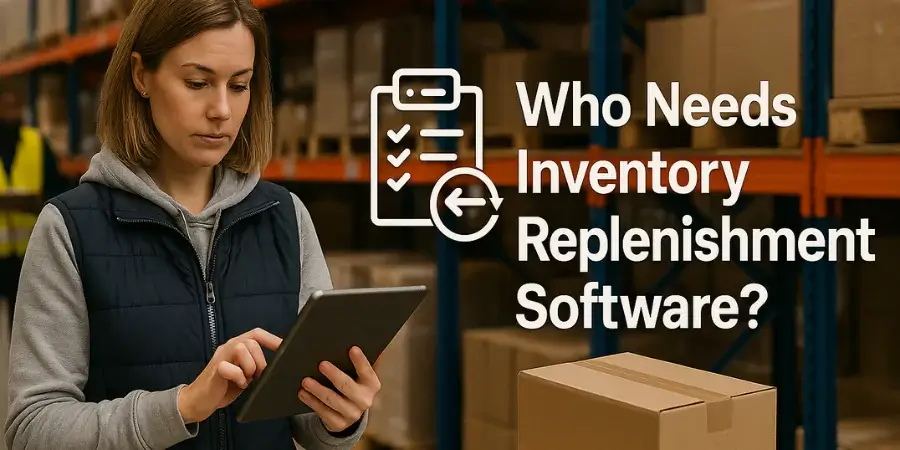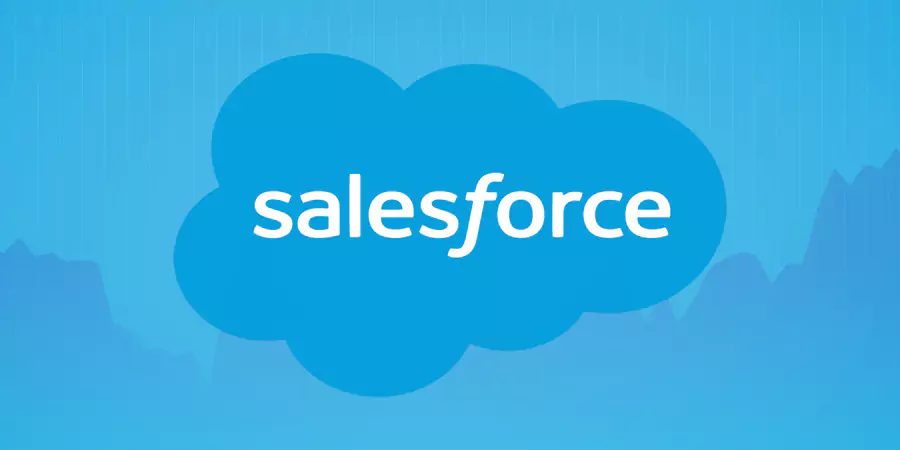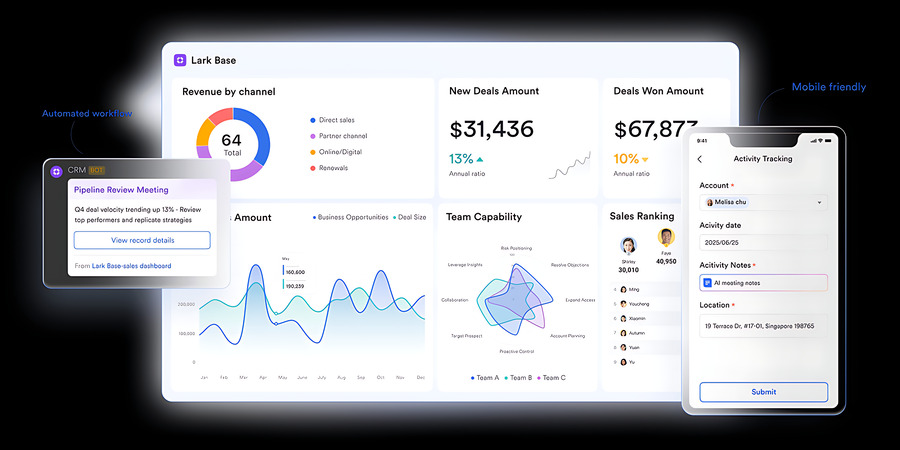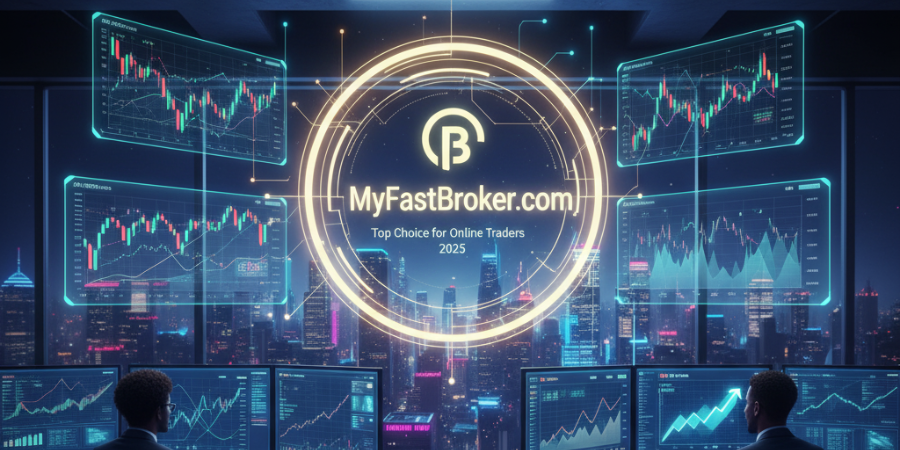Inventory mismanagement costs retailers an estimated $1.75 trillion annually due to overstocking, stockouts, and supply chain inefficiencies. Inventory replenishment software is emerging as a critical tool to combat these losses. It’s not just for big-box retailers anymore; businesses across industries are turning to technology to keep their shelves stocked and their customers satisfied. Whether running a physical store, an e-commerce platform, or managing a warehouse, intelligent inventory management could make or break your business.
Let’s find out who truly needs this software and why it’s becoming necessary rather than an option.
The Core Benefits of Inventory Replenishment Software
The benefits of inventory replenishment software extend beyond simple stock monitoring. It integrates data, automates ordering, and aligns supply with demand to reduce waste and improve efficiency. It also enables better communication between departments and vendors, streamlining the entire supply chain.
Small and Medium Retail Businesses
SMBs often operate on tight margins and lean teams. Manual inventory tracking exposes them to costly errors. With inventory replenishment software, these businesses can automate restocking, reduce human error, and keep inventory levels optimized without hiring additional staff. The software ensures popular products stay on the shelves while minimizing excess inventory that ties up capital. Additionally, it provides customizable alerts and dashboards, helping store owners react quickly to changes in demand.
Software such as LEAFIO.AI enhances retail operations by automating inventory replenishment, allowing for precise demand forecasting and efficient order management without manual intervention. This leads to improved inventory levels, reduced operational costs, and enables managers to focus on strategic tasks, ultimately driving sales growth and operational efficiency.
E-commerce Businesses
Online businesses experience volatile demand and frequent seasonal spikes. Managing inventory manually under such conditions can quickly become chaotic. This is where inventory replenishment software steps in to provide real-time updates and demand forecasting. E-commerce operators benefit from better supplier coordination, quicker response to sales trends, and reduced order fulfillment times. The ability to integrate with marketplaces and fulfillment centers further enhances speed and reliability.
Manufacturers and Distributors
For manufacturers, downtime due to material shortages can be costly. Distributors, on the other hand, must balance inventory across multiple warehouses. Inventory replenishment software streamlines procurement and allows better planning for production cycles. It ensures that raw materials and finished goods are always available in the right quantities, at the right time. By tracking usage rates and supplier lead times, it also helps reduce emergency purchases and last-minute shipping costs.
Grocery and Convenience Stores
These retailers deal with perishable goods and tight shelf space. The timing of replenishment is critical. Inventory replenishment software helps them manage product life cycles, expiration dates, and restock intervals to avoid both spoilage and shortages. Automated ordering ensures a fresh and appealing product mix without overloading the backroom. These systems can also account for local buying patterns and adjust stock levels accordingly.
Healthcare Providers
Hospitals, clinics, and pharmacies depend on accurate inventory to serve patients effectively. Inventory replenishment software supports compliance, tracks usage patterns, and guarantees that essential items like medications and medical supplies are never out of stock. It minimizes manual tracking, improves auditing, and ensures consistent patient care. With audit trails and regulatory support, it also helps meet industry standards and avoid penalties.
Hospitality Industry
Hotels and restaurants rely on a smooth supply of food, linen, toiletries, and maintenance supplies. Delays or stockouts can impact customer satisfaction significantly, as guests expect a certain standard of service. Therefore, it is crucial for these establishments to maintain robust inventory management practices. Inventory replenishment software helps standardize supply levels across properties and track consumption patterns, resulting in better service and fewer last-minute rush orders. This technology also provides valuable insights into purchasing trends and allows businesses to optimize their budgets efficiently. Advanced analytics can even help forecast demand for events, holidays, or seasonal promotions, enabling proactive adjustments to inventory orders to meet customer expectations.
Why Now: The Urgency of Intelligent Replenishment
Businesses are no longer asking if they need automation; they’re asking how fast they can implement it. Inventory replenishment software offers a practical, immediate way to boost operational efficiency and meet customer expectations.
The Rise of Omnichannel Retailing
As businesses expand across digital and physical channels, inventory accuracy becomes a make-or-break factor. Replenishment software enables centralized inventory control across multiple locations and sales channels. This leads to smoother operations and improved customer experiences. It also helps prevent double-selling and ensures consistent availability across all platforms. Retailers can sync online promotions with in-store availability, enhancing marketing effectiveness and reducing customer dissatisfaction.
Supply Chain Disruptions
Global supply chains are still reeling from recent disruptions. Inventory replenishment software helps businesses forecast better, source smarter, and reduce lead-time risks. It gives real-time visibility into supply availability, which is crucial when facing unpredictable logistics environments. These insights help companies shift sourcing strategies and stay agile during volatile times. Additionally, predictive analytics can alert managers to potential shortages before they escalate, enabling proactive intervention.
Labor Shortages
With staffing challenges across industries, automation becomes a force multiplier. Replenishment software reduces the need for manual checks and data entry. Businesses can operate leaner without compromising accuracy or service. It also frees up staff to focus on more strategic or customer-facing roles. By automating repetitive tasks, companies can retain talent longer and reduce burnout in operational roles.
Data-Driven Decision Making
Businesses have more access to data than ever, but without the right tools, that data goes unused. Inventory replenishment software harnesses historical sales data, seasonal trends, and supplier performance to recommend precise reorder points and quantities. This translates to less waste, better margins, and more satisfied customers. Ultimately, it transforms raw data into actionable insights that drive smarter business operations. It empowers managers to make informed decisions faster, reducing delays and enhancing responsiveness to market changes.
Conclusion
Knowing what, when, and how much to restock isn’t just a logistical concern—it’s a strategic advantage. From retailers and manufacturers to healthcare providers and hospitality managers, a wide range of industries stand to benefit. Inventory replenishment software isn’t a luxury; it’s a vital investment for sustainable growth, resilience, and competitiveness in today’s fast-moving economy. Those who adopt it early are setting themselves up to thrive while others play catch-up.
















